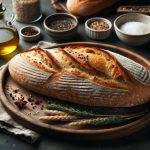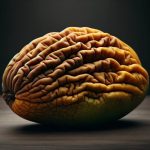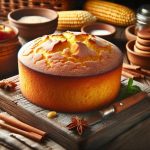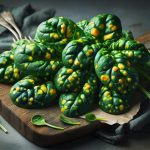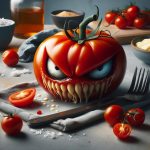As a self-proclaimed vanilla enthusiast, I’ve always been intrigued by the debate between imitation and pure vanilla extract. While rummaging through my pantry, I stumbled upon a bottle of imitation vanilla that had been sitting there for quite some time. It made me question – can imitation vanilla actually go bad?
Yes, imitation vanilla can go bad. The shelf life of imitation vanilla extract can range from six months to four years, depending on the formulation. When stored properly, imitation vanilla extract can last up to 6-12 months after the expiration date. After that, it may start to lose its quality and flavor.
Now let’s dive deeper into the world of imitation vs. pure vanilla and discover which one reigns supreme in taste and longevity.
Contents
- 1 What is vanilla?
- 2 Is imitation vanilla the same as vanilla extract?
- 3 Does imitation vanilla extract go bad?
- 4 Does imitation vanilla extract have alcohol?
- 5 How many calories are in imitation vanilla extract?
- 6 Moist Homemade Banana Bread
- 7 How to Make Pumpkin Cheesecake
- 8 Our Step-by-Step Guide for Making Amazing French Macarons
- 9 Conclusion
What is vanilla?
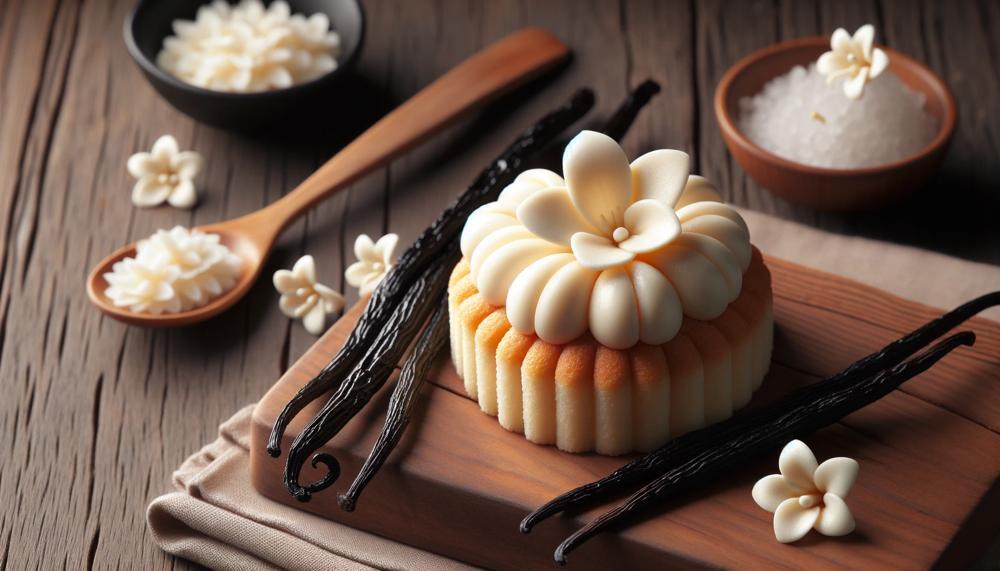
Vanilla is a highly in-demand flavoring that adds a touch of sweetness to a variety of delectable treats, such as cakes, cookies, and ice cream. This delectable ingredient is derived from an exotic orchid plant and has been widely used for centuries to enhance the flavors of desserts.
However, when it comes to vanilla, there are two main types that you need to know about: pure vanilla extract and imitation vanilla. Both are commonly used in baking, but they have distinct differences that set them apart.
| Type | Ingredients | Flavor Profile |
| Pure vanilla extract | Vanilla beans, water, alcohol | Rich and complex |
| Imitation vanilla | Synthetic vanillin, other flavors, water, alcohol | Synthesized vanillin flavoring |
One of the main variations between pure vanilla extract and imitation vanilla is the source of their vanillin. Pure extract contains natural vanillin extracted from vanilla beans, while imitation extract is made from synthetic vanillin. This results in a difference in flavor profiles, with pure extract offering a more intricate and multi-layered taste due to its hundreds of flavor compounds, while imitation extract relies solely on synthesized vanillin for its flavor.
Moreover, pure vanilla extract must consist of vanilla beans, water, and alcohol in order to be considered ‘pure’, while imitation extract can also include other flavors to enhance the vanilla taste. This makes it more versatile for use in various baking recipes.
When it comes to shelf life and stability in baked goods, pure vanilla extract tends to last longer but can lose its potency at high temperatures due to its complex flavor compounds. On the other hand, imitation vanilla has a strong synthesized vanillin flavoring that can hold up well in baked goods like cookies and cakes.
Overall, while both types of vanilla can be used in baking, it is crucial to consider the recipe and desired flavor profile when choosing between pure extract and imitation extract.
Is imitation vanilla the same as vanilla extract?
The primary contrast between imitation vanilla and vanilla extract is in the source of vanillin, leading to unique flavor profiles.
While imitation vanilla consists of synthetic chemicals, pure vanilla extract is derived from real vanilla beans. This results in variations in taste, cost, and application.
Taste:
Imitation vanilla has a more potent but less intricate vanilla flavor compared to pure extract. This is due to the fact that the synthetic vanillin used in imitation vanilla cannot imitate the full spectrum of flavors found in natural vanillin from vanilla beans.
As a result, pure extract is favored for recipes that require the distinct and complex flavor of vanilla.
Cost:
Imitation vanilla is less expensive than pure extract due to its synthetic nature.
This makes it a more budget-friendly option for baking and cooking.
Application:
While both imitation vanilla and pure extract can be used interchangeably in some recipes, the difference in taste may impact the overall flavor of a dish. Imitation vanilla is best suited for oven-baked goods where the difference in taste is challenging to detect.
Pure extract, on the other hand, is preferred for recipes that heavily rely on the unique flavor of vanilla.
Can imitation vanilla spoil?
Yes, imitation vanilla can spoil if not stored correctly or past its expiration date. The shelf life of imitation vanilla is shorter compared to pure extract because of its synthetic nature. It is recommended to utilize imitation vanilla within two years of purchase and store it in a cool, dark place away from heat and sunlight.
However, since it contains preservatives, it can last longer than pure extract once opened and stored properly.
Does imitation vanilla extract go bad?
There are several factors that can affect the expiration of imitation vanilla extract, including the manufacturing process, brand or manufacturer quality, and storage conditions.
If not properly stored, it can quickly lose its freshness and effectiveness, leading to a darker color, unpleasant aroma, and off taste. To ensure the longevity of your imitation vanilla extract, it is best to store it in a cool and dry place, preferably in an airtight container.
Additionally, using it frequently can help to freshen up and enhance the flavor of your dishes.
While the manufacturing process is out of our control, we can still take steps to prolong the life of our imitation vanilla extract. Proper storage is key, as exposure to heat and light can cause it to spoil faster. So, be sure to keep it in a cool and dry place away from sunlight or any sources of heat. Storing it in an airtight container will also help prevent any moisture from seeping in and affecting its quality.
Another tip for extending the shelf life of your imitation vanilla extract is to use it regularly. Not only does this help keep it fresh, but it also adds a burst of flavor to your dishes.
Does imitation vanilla extract have alcohol?
It is crucial to carefully examine the alcohol content of imitation vanilla extract before consuming it. This is particularly significant for individuals who avoid alcohol due to personal or religious beliefs, as even small amounts of alcohol in food products can pose a problem.
Checking the alcohol content is also essential for those who have sensitivities or allergies to alcohol. Consuming imitation vanilla extract with a high alcohol content can lead to adverse reactions, making it important to be aware of the amount of alcohol present.
Moreover, keeping an eye on the alcohol content is crucial for individuals who are trying to limit their intake of alcohol for health reasons. While the amount of alcohol in imitation vanilla extract may seem insignificant, it can accumulate over time and contribute to overall alcohol consumption.
It is always advisable to carefully read the label and ingredient list before consuming any food product, including imitation vanilla extract. By checking the alcohol content, individuals can make informed decisions about whether or not to consume the product based on their personal preferences and needs.
To ensure that individuals are aware and comfortable with the amount of alcohol they are consuming, it is important to check the alcohol content of imitation vanilla extract. This allows for informed decisions when it comes to food and drink consumption, showing that knowledge is key in making wise choices.
| Product | Recommended Alcohol Content | Actual Alcohol Content |
| Pure Vanilla Extract | 35% by volume or higher | Varies, but typically 35-40% |
| Imitation Vanilla Extract | No specific requirement | Varies, but typically less than 2% |
How many calories are in imitation vanilla extract?
The calorie content of imitation vanilla extract is significantly less than that of pure vanilla extract. While pure vanilla extract has around 288 calories per 100 grams, imitation vanilla extract only has about 53 calories per 100 grams. This is because pure vanilla extract is derived from real vanilla beans, which are high in both calories and sugar, whereas imitation vanilla extract is made from artificial vanillin and other ingredients that have lower calorie counts.
In comparison, vanilla flavoring or essence also has a lower calorie content than pure vanilla extract, with approximately 40 calories per 100 grams. However, it should be noted that the exact calorie count may differ depending on the brand and ingredients used.
Furthermore, the amount of extract used in a recipe can impact the overall calorie content. For example, using more pure vanilla extract will result in a higher calorie count compared to using less imitation or vanilla flavoring. It is important to keep this in mind when incorporating these extracts into cooking and baking.
Moist Homemade Banana Bread
Moist, homemade banana bread has always been a staple in my family, and I’ve always been curious about the ingredients that go into making it. One ingredient that has always puzzled me is vanilla extract. I’ve heard mixed opinions on whether using pure or imitation vanilla extract makes a difference in the moisture level and overall quality of the final product. So, I set out to do some research and experimentation to find out the truth.
After conducting various tests, I’ve come to the conclusion that when it comes to moisture and taste, there is not a significant difference between using pure or imitation vanilla extract in your homemade banana bread. While pure extract typically has a higher ratio of vanilla bean, making it more expensive and flavorful, imitation extract can also enhance the vanilla taste by containing other flavors.
One notable difference between pure and imitation extracts is their shelf life. Pure extract can last for several years if stored properly in a cool dark place, while imitation extract should be used within 6-12 months after the expiration date. However, there are options available for those who prefer an alcohol-free alternative as imitation extracts do contain some level of alcohol.
In conclusion, whether you choose to use pure or imitation vanilla extract in your homemade banana bread, both options will provide delicious flavor without significantly impacting the moisture level or overall quality of your baked goods.
How to Make Pumpkin Cheesecake
A delectable pumpkin cheesecake is sure to be a crowd-pleaser. Here’s how to make a delicious and creamy pumpkin cheesecake:
- Start by crafting a sturdy and scrumptious crust using crushed graham crackers, melted butter, and sugar. Press the mixture into the bottom of a springform pan.
- Whip up the filling by blending together cream cheese, sugar, eggs, and vanilla extract until perfectly smooth. Then, fold in pumpkin puree and spices like cinnamon, nutmeg, and ginger for a rich and flavorful filling.
- Pour the filling over the crust and use a spatula to smooth out the top.
- Bake the cheesecake at 350 degrees Fahrenheit for approximately 45 minutes, or until the center is fully set.
- After baking, allow the cheesecake to cool completely before chilling it in the refrigerator for at least 4 hours (or overnight) to ensure it sets properly.
- Serve chilled and top with whipped cream or caramel sauce for an extra touch of sweetness.
Here are some additional tips to make your pumpkin cheesecake even better:
- To prevent cracks from forming on top of your cheesecake, place a pan of water on the bottom rack of your oven while baking.
- For an even smoother texture, make sure all ingredients are at room temperature before mixing them together.
- To enhance the flavor even more, add in some orange zest or a splash of orange juice to your filling mixture.
- Get creative with your toppings – crushed gingersnap cookies or chopped pecans make fantastic additions.
Our Step-by-Step Guide for Making Amazing French Macarons
Achieving the ideal texture and taste in French macarons requires precision and skill.
Accurately measuring ingredients, mastering the macaronage technique, and following crucial tips can assist in creating these delicate cookies with a velvety exterior and mouthwatering filling.
With dedication and perseverance, anyone can become a master at crafting French macarons and amaze their loved ones with these delightful confections.
Our Step-by-Step Guide for Making Amazing French Macarons:
Step 1: Gather Your Ingredients
To begin, make sure you have all the necessary ingredients for making French macarons. This includes almond flour, powdered sugar, egg whites, granulated sugar, and food coloring (if desired).
It’s essential to measure your ingredients accurately to achieve the perfect balance of flavors and textures.
Step 2: Master the Macaronage Technique
The macaronage technique involves gently folding the dry ingredients into the whipped egg whites until just combined. This step requires patience and precision as overmixing can result in flat macarons with no feet (the ruffled edge on the bottom of the cookie).
A good tip is to use a rubber spatula and count your folds to ensure you don’t overdo it.
Step 3: Follow These Tips for Perfect Macarons
To add an extra burst of flavor to your macarons, try incorporating different extracts or fillings. You can also experiment with different food coloring to create vibrant or pastel-colored treats.
Another helpful tip is to let your macarons rest before baking to allow them to form a skin on the outside, resulting in a smooth exterior.
Also Read: When Does Peanut Oil Go Bad?
Conclusion
In conclusion, the ongoing debate between imitation and pure vanilla extract has captivated the taste buds of many vanilla enthusiasts.
While each type boasts its own distinct qualities, it’s important to note that they also have varying shelf lives. While imitation vanilla may not spoil like other food items, its synthetic nature can cause a decline in potency over time.
On the other hand, even pure vanilla extract can lose its flavor if not stored properly or exposed to heat and light. Therefore, it is crucial to pay attention to expiration dates and proper storage techniques for optimal flavor in your culinary creations.
Ultimately, whether you choose imitation or pure vanilla extract in your baking and cooking endeavors, both options have the potential to yield delectable results that will tantalize any palate.
